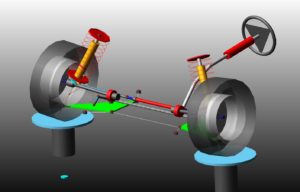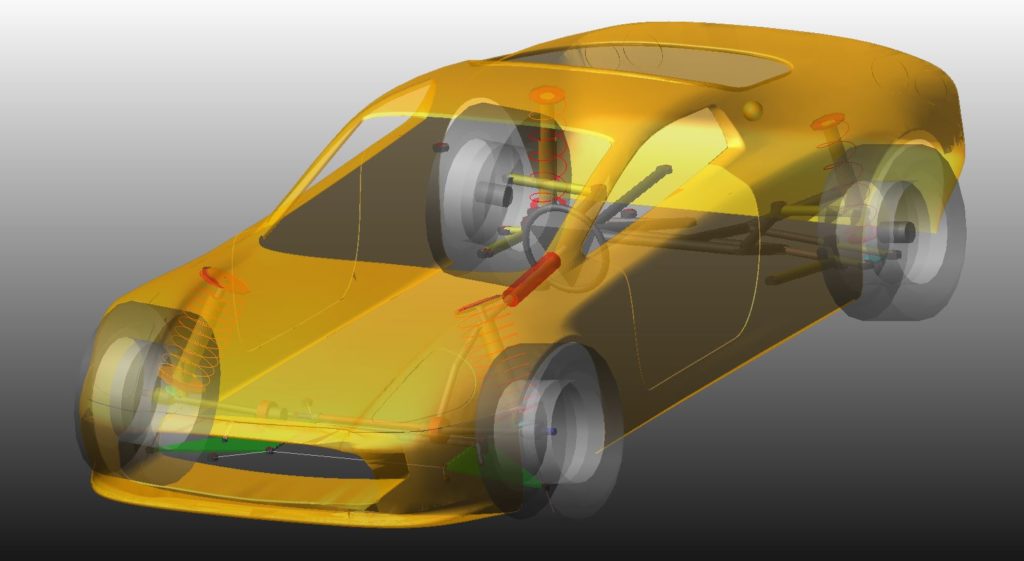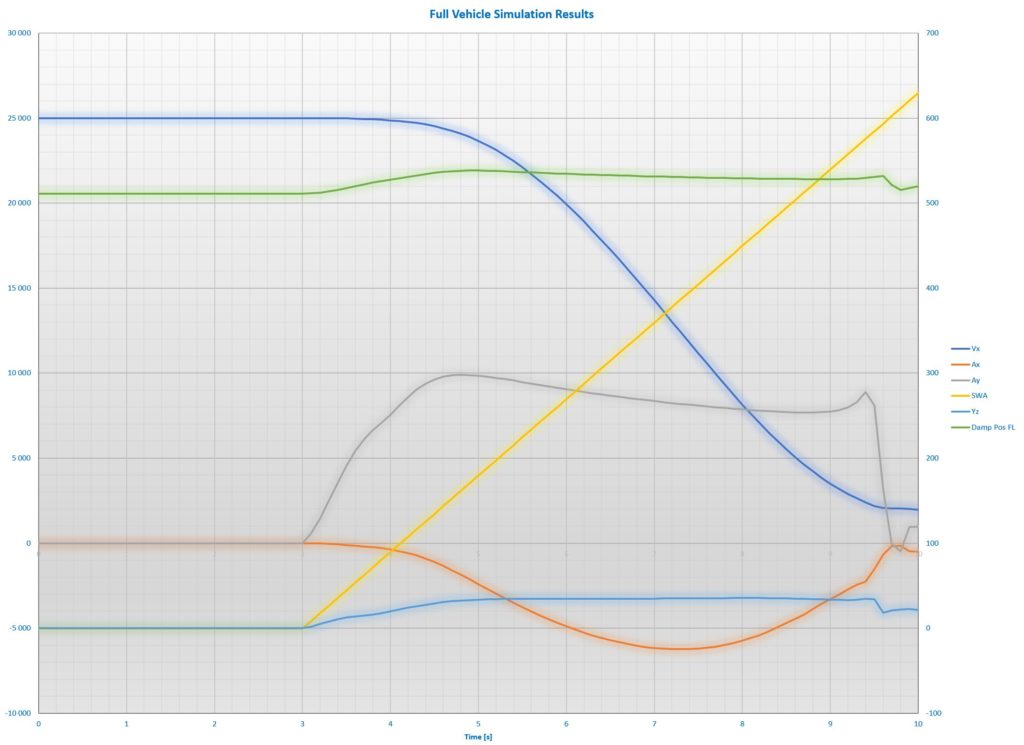If deeper understanding of the suspension characteristics of the vehicle is desirable, multi-body simulation (MBS) is the way to go. MBS for cars can be divided into fullvehicle and half vehicle analysis. Full vehicle is obviously the complete vehicle with front and rear suspension together with bodywork, tires, engine, drive train, steering and brakes. Additional sub systems can also be modelled for example ABS etc. Half vehicle analysis focus on the front or rear suspension.
Pertechs has extensive knowledge in this area and the necessary tools to perform those kinds of studies and can therefore help you to for example:
Half Vehicle Simulations
Learnings from this work are all the suspension kinematics that are important for the vehicle behaviour such as for example:
In addition to the kinematics, it is also possible to investigate the behaviour of the elastic behaviour of the components in the suspensions, such as all the bushings. On top of that flexible bodies can be used for all loaded parts meaning that the elastic contribution from those can also be captured. All-in-all one cn really get a close correlation to the behaviour of the real vehicle to study exaclty what happens with all the elasto-kinematic behaviour of the suspension and steering vs loads and/or travel.

With the outputs listed above retrieved for both the front and rear suspension it gives a deeper understanding of what the behaviour of the vehicle will be and normally also, in what direction one needs to alter the design or settings of the suspensions to reach a defined goal. It is a very efficient tool to alter parameters and quickly identify what effect each change has on the characteristics.
Full Vehicle Simulations
I full vehicle simulations the normal method is to run either open loop or closed loop driving manouvres. In the open loop scenario, the control input (throttle, brake, steering etc) is sent to the vehicle model and it responds to those inputs. In the closed loop scenario, a driver model in included in the simulation, meaning that the driver/vehicle combination will try to follow a predefined behaviour, for example a path around a race track. Both methods has its positives and negatives and it is a matter of selecting the appropriate way depending on what the need is.

In any case, full vehicle simulations takes the understanding of the vehicle to the next level compared to half vehicle analysis. It is definately a more complex task but the reward is also a lot higher since true preformance can now be evaulated, explored and optimized.

Please contact us to discuss how we can help you extract higher knowledge about, and therefore performance from your current or future vehicle through the use of objective multi-body simulations.
